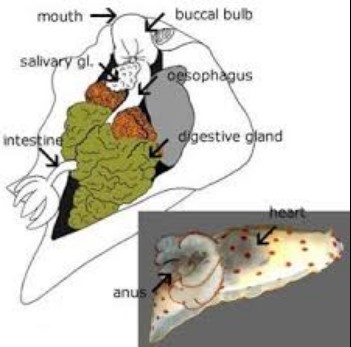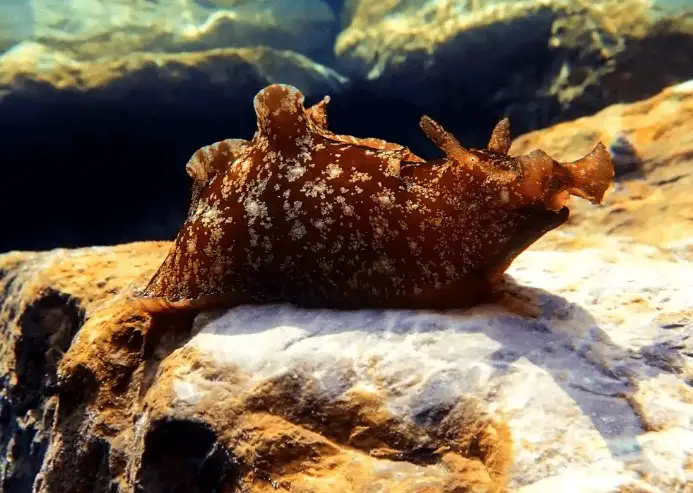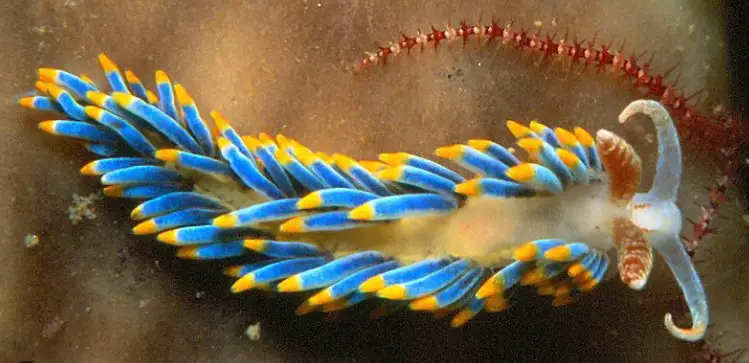Sea hares and nudibranchs are captivating subjects within marine biology, each offering a unique glimpse into the evolutionary marvels of sea life. Though often mistaken for one another due to their vivid appearances and soft bodies, these creatures differ significantly in anatomy, behavior, and habitat.
The key difference between sea hares and nudibranchs lies in their physical structure and defensive mechanisms. Sea hares, belonging to the order Anaspidea, are larger and possess a partial internal shell, while nudibranchs, classified under the order Nudibranchia, are noted for their striking forms and lack of any shell. Each species uses distinct methods of defense: sea hares release ink, whereas nudibranchs rely on their bright colors to ward off predators.
Sea hares and nudibranchs play essential roles in their respective ecosystems. They contribute to the biodiversity of marine environments, acting as both predators and prey. Their unique adaptations and behaviors underscore the diversity of life forms in oceanic habitats, offering important insights into ecological balance and the health of marine ecosystems.

Physical Characteristics
Sea Hare Description
Size and Shape
Sea hares are fascinating marine mollusks with a bulky, soft body that can grow impressively large. Typically, they range from 5 to 75 centimeters in length, depending on the species. Unlike many other sea creatures, sea hares do not have a hard external shell. Instead, they possess a small internal shell that covers the heart and acts as a protective barrier.
Color Variations
The color of sea hares varies widely, adapting to their environment for camouflage. Their hues can span from a muted brown or green to vibrant pink or yellow, blending seamlessly with their surroundings. This color adaptation is vital for their survival, helping them hide from predators and ambush prey.
Nudibranch Description
Size and Shape
In contrast, nudibranchs are smaller than sea hares, generally measuring between 2 and 60 centimeters. Known for their extraordinary beauty, nudibranchs boast elongated bodies with tentacles on their heads called rhinophores, which they use for smell. The body of a nudibranch is more flattened than that of a sea hare, which aids in squeezing into narrow spaces between rocks and coral.
Color Patterns
Nudibranchs are celebrated for their dazzling color patterns and intricate designs, which serve as a warning to potential predators about their toxicity. These colors can be extremely vibrant and come in a vast array of patterns that make each species distinct. From neon blues and greens to deep reds and oranges, these colors are not just for defense; they also play a role in mating.
Habitat and Distribution
Sea Hare Habitat
Geographic Locations
Sea hares are found in oceans all around the world but are most commonly seen in the Pacific and Indian Oceans. They thrive in temperate and tropical waters where there is an abundance of growth, particularly in regions with lots of seaweed and algae.
Preferred Environment
The preferred habitat for sea hares includes shallow waters such as tidal pools, estuaries, and nearshore environments where algae are plentiful. They are benthic, meaning they live on the ocean floor, often hiding under rocks or burrowing into the sand to avoid predators.
Nudibranch Habitat
Global Distribution
Nudibranchs have a global distribution, inhabiting a range of marine environments from shallow coral reefs to deep ocean floors. They are predominantly found in coral reefs due to the abundance of their prey species like sponges and barnacles.
Habitat Preferences
Each nudibranch species has specific habitat preferences that often correlate with their dietary needs. They are typically found in environments rich in prey species. Many prefer the vibrant ecosystem of coral reefs, while others reside in colder waters and can be found at considerable depths.
Behavior and Lifestyle
Sea Hare Behavior
Feeding Habits
Sea hares are herbivores, primarily feeding on algae. They have a keen sense of smell which helps them locate their food. Their diet helps control the growth of algae in their habitats, making them vital for maintaining the ecological balance.
Defense Mechanisms
When threatened, sea hares can release a cloud of purple ink to confuse predators and escape. This ink is mildly toxic and can deter predators such as fish and crabs, giving the sea hare a chance to flee.
Nudibranch Behavior
Diet Preferences
Nudibranchs are carnivorous, feeding mainly on sponges, hydroids, anemones, and other small sea creatures. They are equipped with specialized mouthparts that allow them to pierce their prey and suck out its contents.
Predation and Defense
Nudibranchs utilize their vivid colors as a primary defense mechanism, a tactic known as aposematic coloration. Some species can also absorb toxins from the prey they consume and use these toxins as an additional defense against predators. This dual strategy of visual warning and chemical defense effectively keeps many potential threats at bay.

Reproduction and Lifespan
Sea Hare Reproduction
Mating Practices
Sea hares are hermaphrodites, meaning each individual can act as both male and female during reproduction. Mating often occurs in large groups where chains of individuals form to facilitate the transfer of sperm. This unique mating behavior ensures genetic diversity and maximizes reproductive success.
Lifespan and Development
The lifespan of a sea hare typically ranges from one to two years. After mating, sea hares lay thousands of eggs in string-like structures, which are often attached to seaweed or rocks. The eggs hatch into larvae that are planktonic, initially drifting in the ocean currents before settling on the ocean floor to begin their benthic life stage.
Nudibranch Reproduction
Breeding Techniques
Nudibranchs also exhibit hermaphroditic characteristics but generally do not form mating chains like sea hares. Instead, they engage in a reciprocal exchange of sperm with another individual. Nudibranchs lay their eggs in intricate spiral ribbons or masses that are frequently found adhering to the undersides of rocks or coral.
Lifecycle Stages
From the egg stage, nudibranch larvae emerge and spend a brief period in the planktonic stage, during which they are vulnerable to a wide range of predators. Surviving larvae eventually settle onto the reef where they mature into their colorful adult forms. Nudibranchs can live up to one year, depending on environmental conditions and predation pressures.
Ecological Roles
Impact of Sea Hares
Ecosystem Contributions
Sea hares play a critical role in controlling algal growth, which helps maintain the health and stability of marine ecosystems. By consuming large amounts of algae, they prevent excessive algal blooms that can lead to oxygen depletion and harm to marine habitats.
Human Interaction
Humans have interacted with sea hares primarily through the marine aquarium trade and, in some cultures, as a source of food. In research, sea hares are valuable for neurological studies due to their large nerve cells.
Impact of Nudibranchs
Role in the Ecosystem
Nudibranchs are vital predators in the marine food web. They help regulate the populations of sponges and other invertebrates, contributing to ecological balance within their habitats.
Benefits to Biodiversity
By preying on a variety of organisms and displaying resilience to a range of marine environmental conditions, nudibranchs contribute significantly to the biodiversity of their ecosystems. Their presence is often an indicator of the health of a coral reef or marine environment.
Conservation Status
Threats to Sea Hares
Environmental Threats
Pollution, habitat destruction, and climate change pose significant threats to sea hare populations. Pollutants can accumulate in the algae they consume, leading to toxic effects, while rising sea temperatures and acidification threaten their habitats.
Conservation Efforts
Conservation efforts for sea hares include habitat protection, pollution control, and regulations on the collection of specimens for both commercial and scientific purposes.
Threats to Nudibranchs
Human Impact
The biggest threats to nudibranchs include habitat loss due to coastal development, pollution, and the impacts of climate change, such as ocean warming and acidification.
Protective Measures
Efforts to protect nudibranchs focus on establishing marine protected areas, enforcing regulations against pollution, and promoting awareness of their ecological importance.
Key Differences Summarized
Comparative Table of Traits
- Size and Shape: Sea hares are generally larger and less colorful compared to the often vibrant and smaller nudibranchs.
- Defense Mechanisms: Sea hares release ink, while nudibranchs use coloration and sometimes toxins absorbed from prey.
- Reproductive Strategies: Sea hares form mating chains, whereas nudibranchs exchange sperm reciprocally.
- Lifespan: Sea hares live slightly longer than most nudibranchs.
Quick Reference Guide
This guide highlights the primary differences and ecological roles of sea hares and nudibranchs, aiding enthusiasts and researchers in quickly identifying and understanding these intriguing marine invertebrates. Through awareness and education, we can appreciate the subtle intricacies that define and distinguish these creatures within their vibrant underwater worlds.
FAQs
What are Sea Hares?
Sea hares, named for their rabbit-like appearance, are large marine mollusks known for their soft bodies and the ability to release a cloud of purple ink as a defense mechanism against predators.
How do Nudibranchs Defend Themselves?
Nudibranchs use vibrant colors and intricate patterns to signal toxicity, deterring predators through a visual display of their potential danger.
Where can Sea Hares be Found?
Sea hares are typically found in shallow waters, especially in areas with abundant seaweed and algae, which constitute their primary diet.
What do Nudibranchs Eat?
Nudibranchs are diverse in their dietary habits, primarily feeding on sponges, anemones, or other small marine organisms, depending on their species.
Are Nudibranchs Important to Marine Ecosystems?
Yes, nudibranchs play a critical role in marine ecosystems, controlling sponge populations and contributing to the nutrient cycle within coral reef communities.
Conclusion
The fascinating world of sea hares and nudibranchs reveals much about the complexity and beauty of marine life. Their distinct differences in anatomy, behavior, and ecological roles not only highlight the diversity within the animal kingdom but also emphasize the importance of marine biodiversity. These creatures, while often overlooked, provide essential functions that help maintain the health and stability of their environments.
Understanding and appreciating the nuances between these marine invertebrates is crucial for conservation efforts. By protecting their habitats and studying their behaviors, scientists and conservationists can ensure that the delicate balance of marine ecosystems is preserved for future generations.

